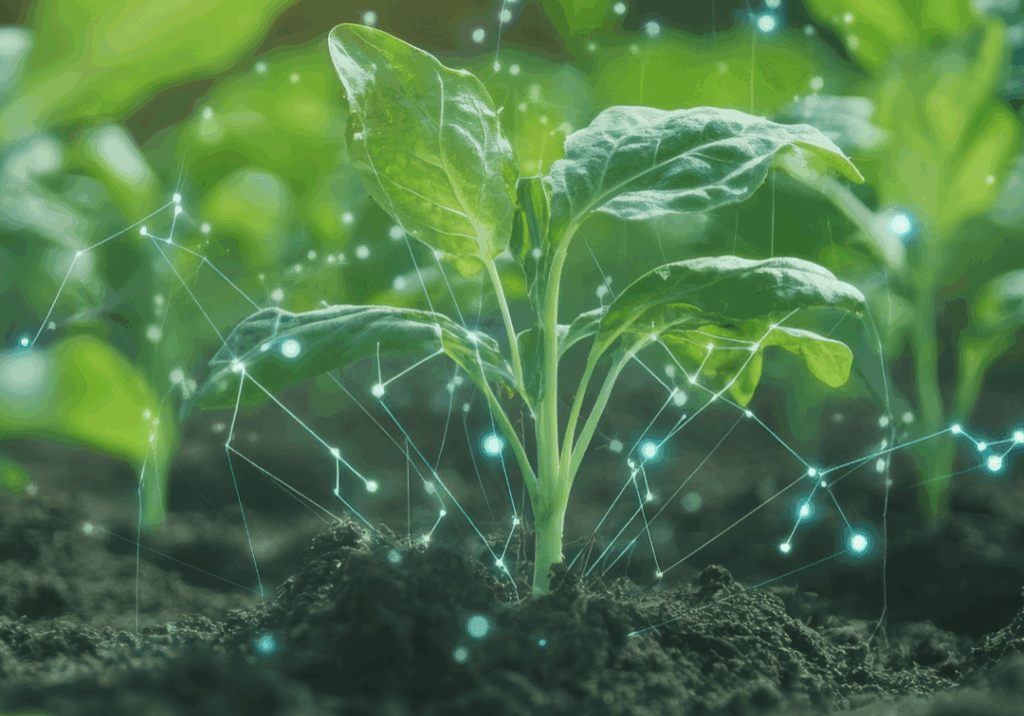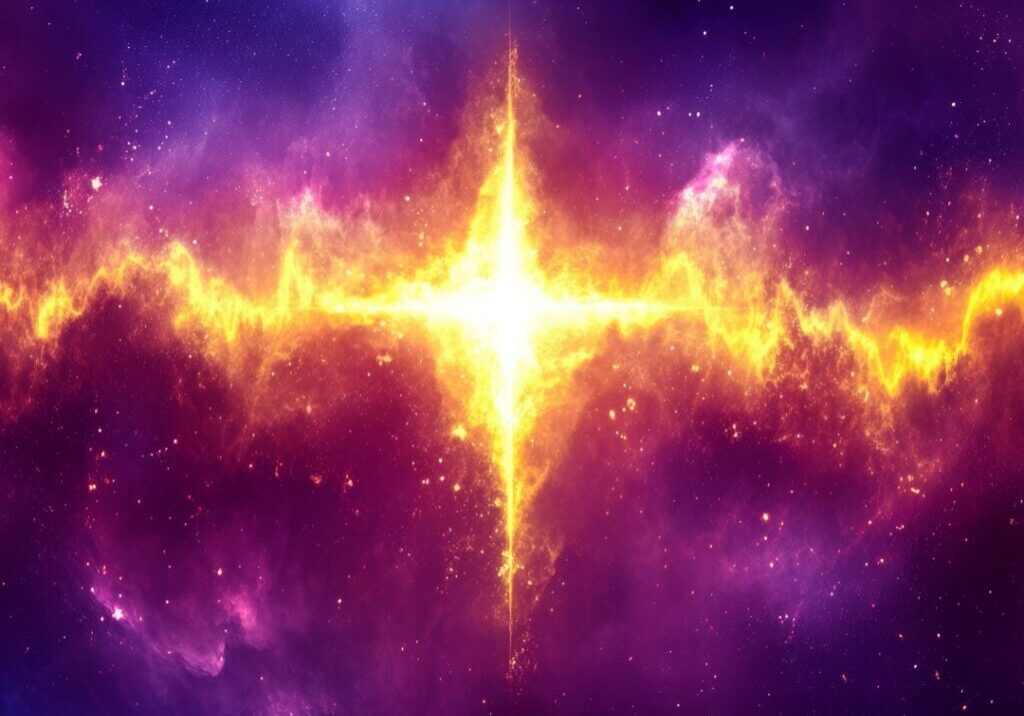🌱 Consider supporting us during our June Fundraiser—a call for integral ecology in an age of AI.
Lessons for Our Time
We recently concluded our annual conference on the theme “Religion in an Age of Science,” in which all the speakers agreed that religion can no longer remain credible without the insights of science. The new cosmic story redefines religion as a temporal process, an awakening to more conscious life and deeper connectedness, thus abandoning religion as a reliance on certainty, timelessness, and eternal truths.
Shortly after the conference, an undergraduate student, a freshman, submitted his final paper for my course on “Faith, Reason, and Culture,” summarizing the main points we discussed throughout the semester. What struck me was that this young man brought the intellectual and philosophical discussions of the conference into a concrete framework of thought and action. I would like to share some of his insights here, as they illuminate the evolutionary vision of Teilhard de Chardin and our role in an evolving universe.
- Teilhard de Chardin saw the cosmos as an unfolding process in which everything is evolving toward greater complexity and unity. He called this the movement toward the Omega Point, a future of wholeness in love. He said love is the driving force behind the movement of all things.
- Understanding this process changes our sense of purpose. Instead of thinking that my goal is to find a destination, I now see I am part of something still in motion. My actions, relationships, and decisions all contribute to this ongoing story.
- I am not just living in the world; I am part of its growth. Evolution is not just a biological fact; it is also spiritual and moral.
- God is not far away or confined to some distant heaven but is right here within all things. Instead of reaching out toward something external, I am learning to pay attention to what is within and around me; my deepest self is in constant relationship with the sacred.
- God is not found in perfection but in presence, especially among those who are most excluded.
- I have stopped thinking of religion as a checklist of beliefs, and I have begun to see it as an experience of connections. God is not a distant observer but the very depth of life.
- This new sense of divine presence helps me see my responsibility to the Earth. Before, I thought of environmental care as important but mostly concerned with scientific or political matters. Reading Pope Francis’s Laudato Si’ has shown me that care for the earth is also a spiritual issue. The environment, the poor, and our hearts are all connected. If we destroy nature, we also harm the most vulnerable people and dull our own sense of wonder and responsibility. Ecology is about honoring the sacredness of all life. The Earth is not just a backdrop for human activity; it is our shared home, woven with spirit and story. Pope Francis says the Earth “cries out” under the weight of greed and neglect, and it is our task to listen and respond.
- Humanity is not something we are born into – it is something we grow into. If God is love and if being in God’s image means being able to love, then personhood is not limited to where we come from, but how we love.
- We are part of something bigger, deeper, and more mysterious than we often realize. What I know is that the world is unfinished. What I must do is participate in its healing with humility and love.
- What I may hope for is that through love and awareness, we are moving toward something better. This is not abstract to me. It means making time for silence and reflection, so I can hear myself and know myself better. It means choosing kindness even when it is hard. It means seeing value in the Earth and in each person I meet.
- Faith is no longer about being certain. It is about being open to thought and mystery.
- Reason is not about having the final answer – it is about asking better questions.
What I have come to realize is that younger generations are already primed for second axial religion. By second axial religion, I mean the search for ultimate meaning or having ultimate concern that is based on community, ecology, interconnectedness, science and technology. Older generations have been brought up on axial religion, which emphasizes individuality, autonomy, freedom, thought, and transcendence. Monotheism, and its political and social correlates, is rooted in axial religion. Axial persons think in binary relationships: God and world, eternity and time, heaven and earth, spirit and matter, saved and sinner. The word “God” points to a perfect, eternal Being who exists outside time but operates in time; a God who is related to the world but is essentially unaffected by the world. Generations born in the age of computer technology, postmodernism, and ecology, signify a new consciousness of interconnectedness, community, global consciousness, and social justice. Teilhard de Chardin was a first axial person who anticipated religion in the second axial period.
Second axial religion goes beyond first axial concerns primarily because time and space are dynamic aspects of an energetically-driven universe. We live in a universe of radical uncertainty, one which is intrinsically connected and consciously active. Physicist Lee Smolin in his book Time Reborn states that time is the most real aspect of our perception of the world. Everything that is true and real takes place in each particular moment which opens up to a succession of moments. Space is an emergent property of the universe. The future, therefore, is not totally predictable and is open to infinite possibilities.
What we have to put to rest, Smolin states, is the idea that what is bound in time is an illusion and what is timeless is real. In the first axial age, with its ancient cosmology, God dwelt above the stars and angels as Creator and sustainer of the universe. Now we must overcome the idea that anything is, or can be, timeless. We need to see everything in nature, including ourselves, our technologies and, in a particular way, God, as time-bound and part of a larger, ever-evolving system. This is what Teilhard de Chardin realized by stating the Absolute is found within matter and not apart from it, a new and vital presence of God, not a God draping the world with power, but a God integral to the world’s becoming. God and world are in the process of becoming something more together because the universe is grounded in a center of divine love. In his essay on The Heart of Matter, he wrote: “I see in the world a mysterious product of completion and fulfillment for the Absolute Being himself” (Heart of Matter, 54).
One of the greatest challenges for first axial religious believers is overcoming the timeless, eternal God of perfection and reconceiving God as a presence of unconditional love. Love is the indestructible energy of cosmic life. Once we grasp our true reality, hope looms before us. As Saint Paul wrote: “There are three things that last: faith, hope, and love, and the greatest of these is love.”
 View print-friendly version
View print-friendly version
29 Comments
Leave a Comment
Related Posts

Integral Ecology in an Age of AI
In 1972, the Norwegian philosopher Arne Naess proposed a new paradigm based on the holistic view of interconnected nature. He coined the term “deep ecology” to challenge humanity to ask…


I’m entering this conversation as one who has lived through first axial and now into second axial “religion.” My own take on human evolution is that there is a wholeness to it that involves the interaction, intertwining and intermingling, throughout time, of mind and matter at-one with transendental, God-love. As with all evolution, it’s the God-love that is at its core.
Humanity has a hard time getting that. To speak of fist axial and second axial religion, it seems to me, is to speak of how humans approach religion more than it is to speak to the unifying core of love, which is what religion, as well as all humanity should be about. Right now I see and trust that those people who truly desire to live lovingly are seeking and finding a way to do that. I do agree, however, that it would help matters if we weren’t so insistent on keeping past world views along with the spiritual truths that religion is meant to convey.
I see technology and AI as just another invention of humanity – the latest since the wheel-to the industrial revolution, that can be either positive or negative. I love that I can type a stupid question into my computer and AI will give me a useful answer, but I certainly wouldn’t trust it to tell me the meaning of life. Currently, I do not think all AI usage and proposals bode well for us: think massive rape of minds and energy – and perhaps souls.
To end with a positive note, I’m currently meditating on Jesus’ “last will and testament,” in John 17:20-26. So much there to contemplate!
Incredible!! Such great convergence. So grateful, sometimes I feel kind of isolated here in Charleston SC. I’m going to connect more faithfully. Health and being a good wife and grandma have been trying but cherished😅. I fervently pray that Pope Leo will acknowledge how much you and community have contributed to our spiritual wisdom and prayer lives. If not, I will remain very supportive as your combined scientific/theological contributions have given such increased sacred awareness of our interconnection in your ongoing unfolding writing and presentations. I’m so fortunate to follow and this progress needs to permeate Vatican. Thank you for your unselfish life changing work and the people who have contributed. I pray for your ongoing health. Blessings on your continued enlightening teachings. Hearing from your students provides hope for future and great delight💖
Our Catholic Community in Exile here in Australia will feast on theses gems of wisdom when our brilliant homilists present them in the near future. Thank you.
Sister Ilia, your essay provides us with a deeply profound and concise presentation of Teilhard’s views and his sense of what a 2nd axial religion might entail. Within the context of an ongoing evolutive creation it is prescient and eminently wise. However, it will take a monumental shift in worldwide consciousness for such awareness to become the coin of the realm. This shift might be facilitated by the development of spiritual hubs as Fr. Tomas Halik brilliantly recommends in his recent book “The Afternoon of Christianity:The Courage To Change”:
“Before they received the name of ‘Christian’s’ in Antioch, Jesus’s disciples were known as ‘the people of the way.’ Today, on the threshold of the afternoon of Christianity, the Church must once again become a community of the way, developing the pilgrim character of faith in order to cross this new threshold. But it also needs to build living spiritual centers, hubs from which to draw courage and inspiration for the journey ahead. Christians need to draw on these centers, but they cannot permanently retreat to them or erect ‘three tents’ high above the mundane concerns of life and the world as the apostles on Mount Tabor longed to do (P. 234, Kindle version).”
Sister Ilia, Christophany groups as currently supported by your Christogenesis organization may well become examples of Halik’s call for “Spiritual Centers” which in this case might be hubs for facilitating the assimilation and actualization of Teilhard’s vision— little synods, if you will, for listening and exchange on the meaning of God in a world of ongoing evolutive creation as we enter the 2nd axial period.
Gratefully & Respectfully,
Bill Eidle
I am heartened by your student’s reflections, and by Lee Smolin’s insights into the nature of time. I recently started reading Hildegard of Bingen’s Book of Divine Works (from the series: The Fathers of the Church – Medieval Continuation, translated by Nathaniel M. Campbell). Remarkable to me is how Hildegard combined current cosmological knowledge and church teachings with her personal experience of God, matters that we now tend to keep separated.
I noticed that when Hildegard writes of God’s timelessness and perfection, she often pairs it with descriptions of how God works (and had always planned to work) through humanity’s limitations. To me, she seems to be moving toward an understanding of eternal patterns of the sacred that she sees evidenced in creation that is quite close to that of Teilhard’s vision of God working with and through us via evolutionary processes. One example is from section 11 of her commentary on her first vision (page 41):
“…Love completed her work deliberately, one small and distinct piece at a time, so that in it there would be no weakness but rather all fullness. Humans cannot do this, for when they have even the slightest potential of doing something, they can barely keep at it long enough to bring it to completion so that others can see it.”
Science and scientists, per se, aren’t going to change religion. With few exceptions, they have no interest in it, publicly that is. Likewise with religion and religionists, who as a group have a resistant stasis of their own.
The catalyst for change falls to
those spiritually awakened souls who see and can clearly name the nexus (constant) that joins their separate appearing subjects in a unified field, and is skilled in brokering their marriage. Recall, they were once married long ago, until their great separation and divorce.
It is unlikely that ‘broker’ will be a scientist, academician, or religionist per se. But s/he will, in consciousness, be firmly planted
in that unified field, having the same transpersonal identity and mind of Christ on the matter, able to understand the path to their reconciliation. Even then, there will be few takers, the majority remaining in unbelief.
The axis in “axial” is one and the same axis, a universal constant (axis mundi) that has always been there, never changes, and joins all things to itself and themselves. Being fixed, it never evolves, only the human understanding of its centrality does on its ascent from spiritual density and blindness.
As a bridge builder, this person, like the Master himself, will be unrecognized. resisted, trampled on, and ignored by both sides, though they will be the reconciled embodiment of who others say they are looking for.
But what they speak with their mouths will be far from their hearts, even greater than before, when the divide between head and heart, and among all things, was less pronounced millennia ago than it is now.
The more things change, the more they stay the same, conferences and convocations notwithstanding.
These twelve points of second axial religion are so life-giving! They are the basis for the Christian faith to survive into the future. The challenge is to how to get this message out to the many who still follow traditional religion, and don’t know that this new approach is available. We have to try and bring everyone along with us.
Hilda Geraghty https://teilharddechardinforall.com/
I very much enjoyed and appreciate your student’s ability to write and synthesize this quite complex material so well. Cultivating younger people with the ability to conceptualize all of creation and God at work together in love is heartening. This is Faith, Hope and Love!